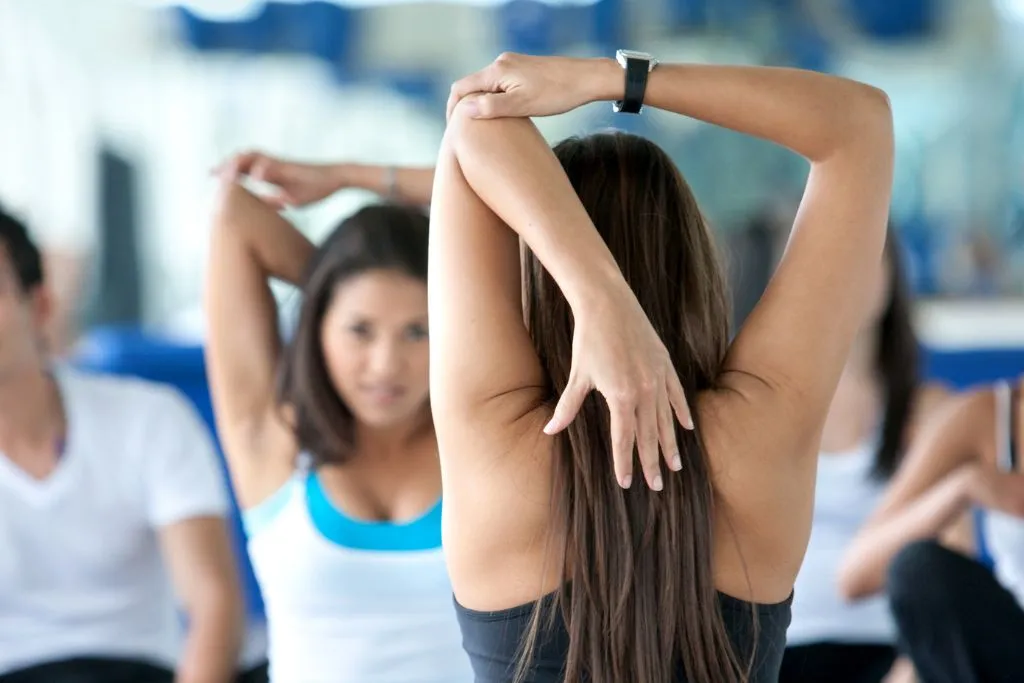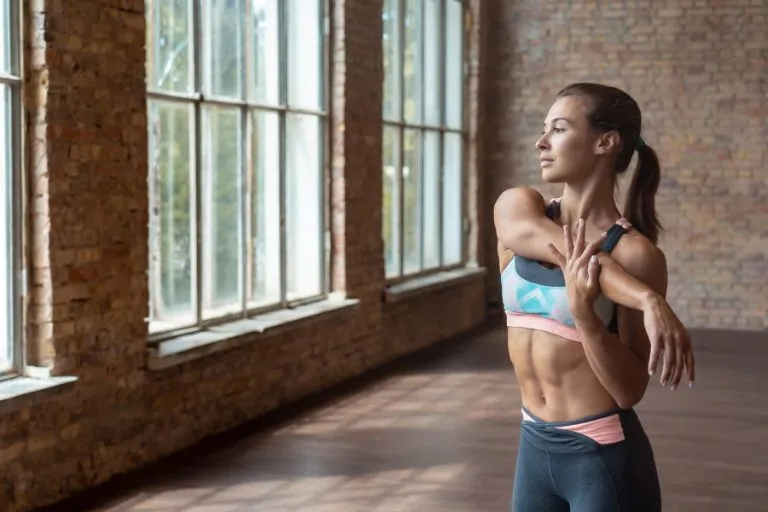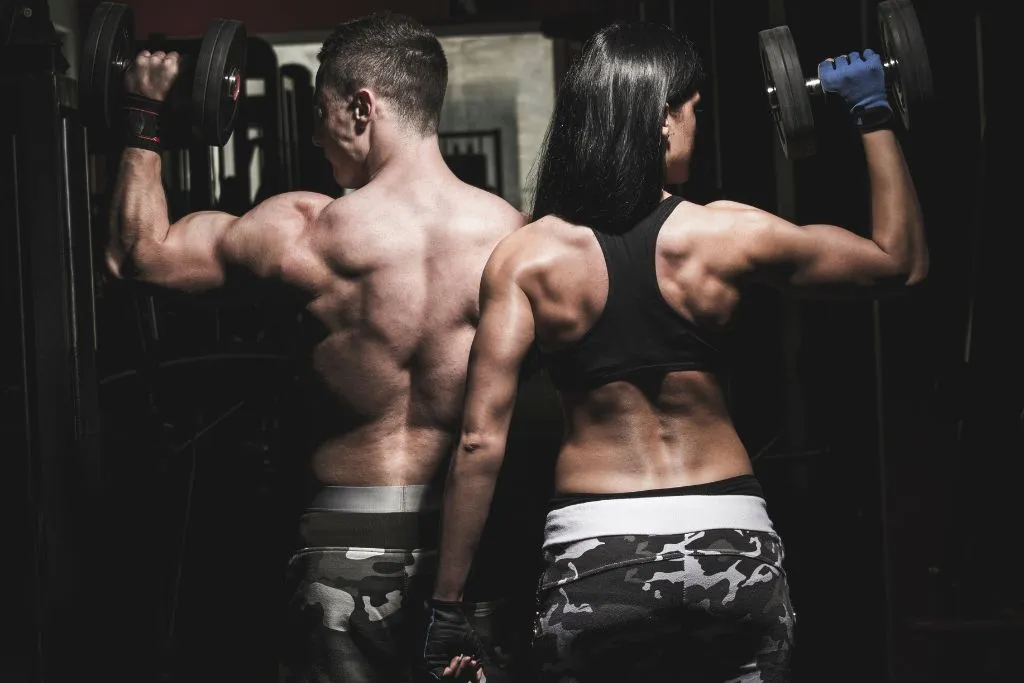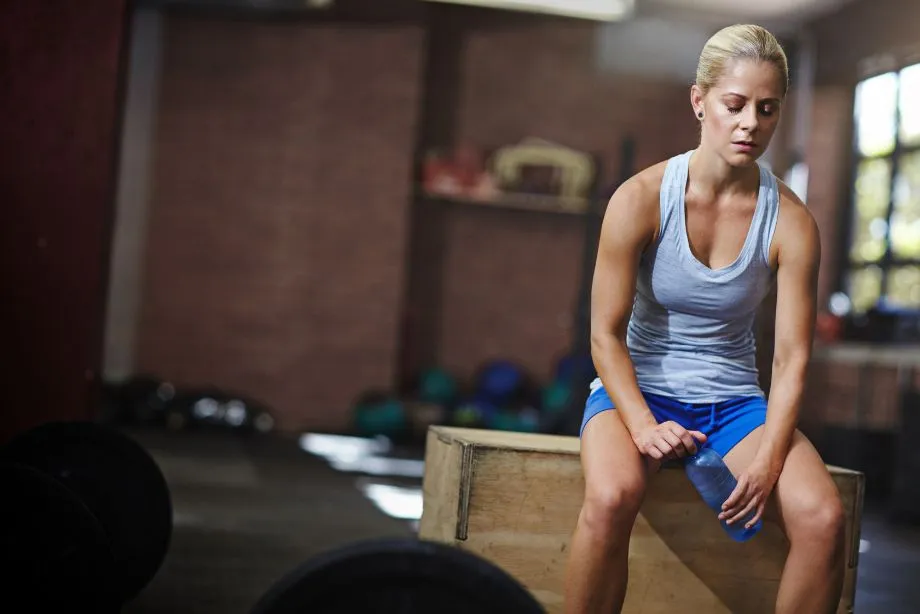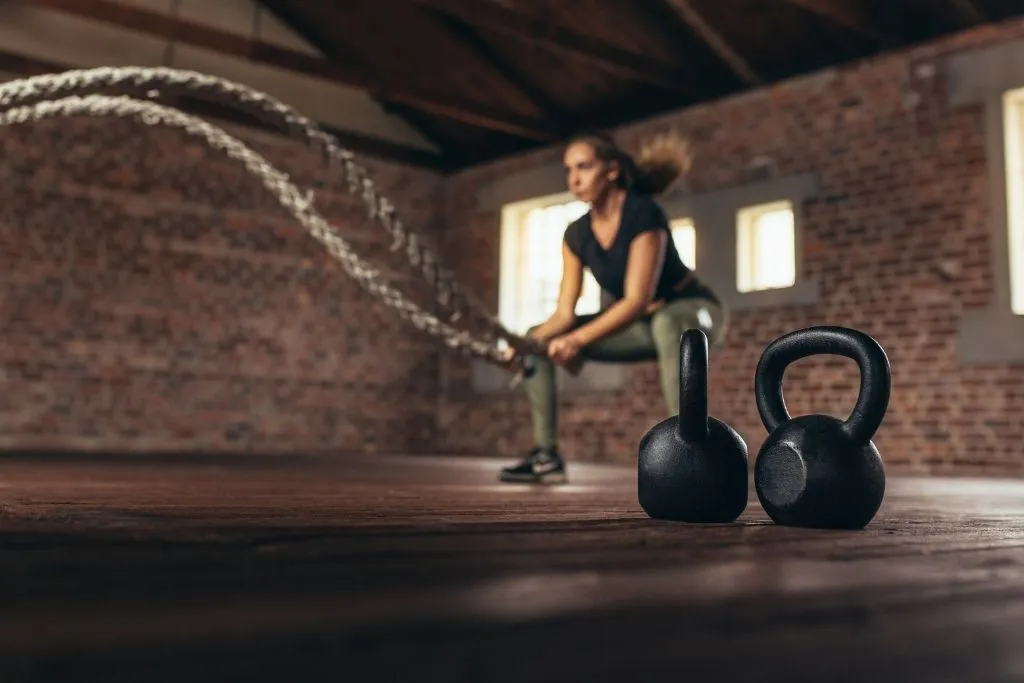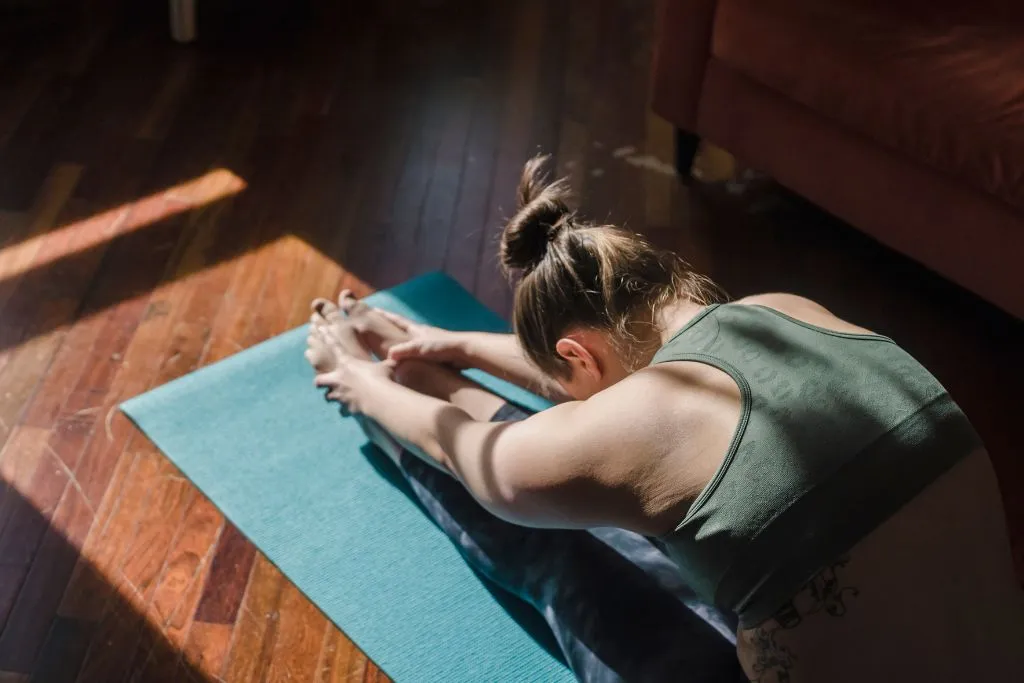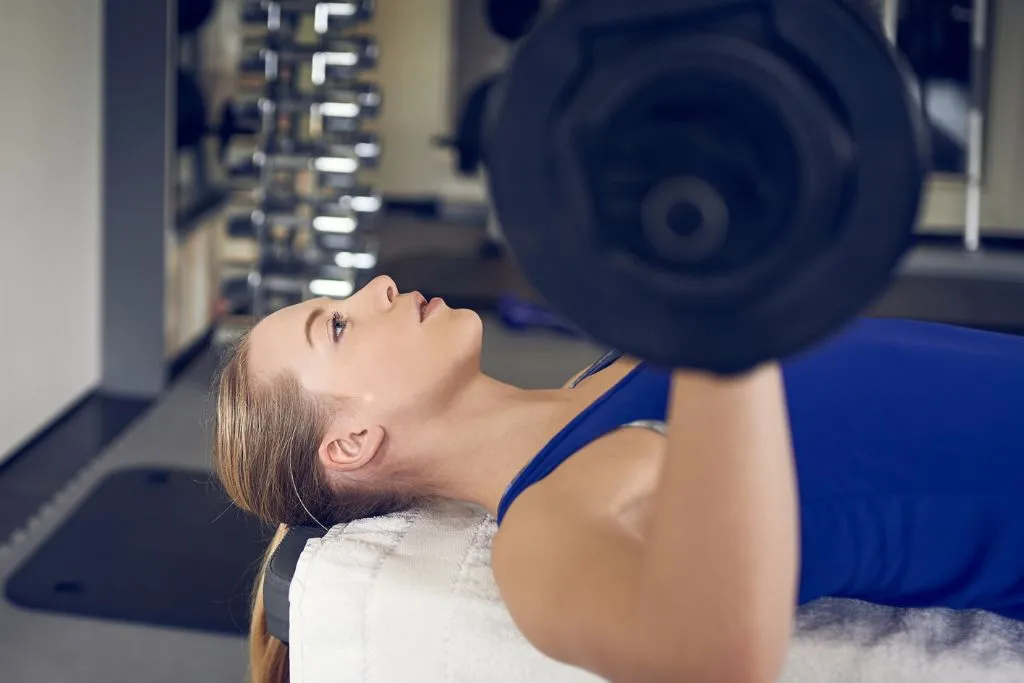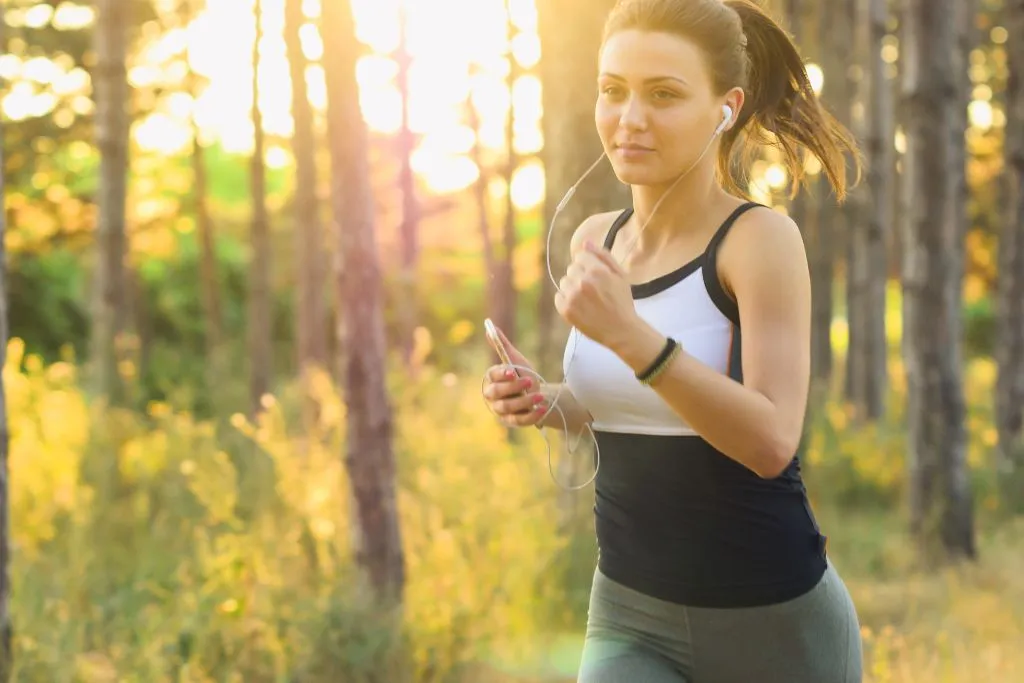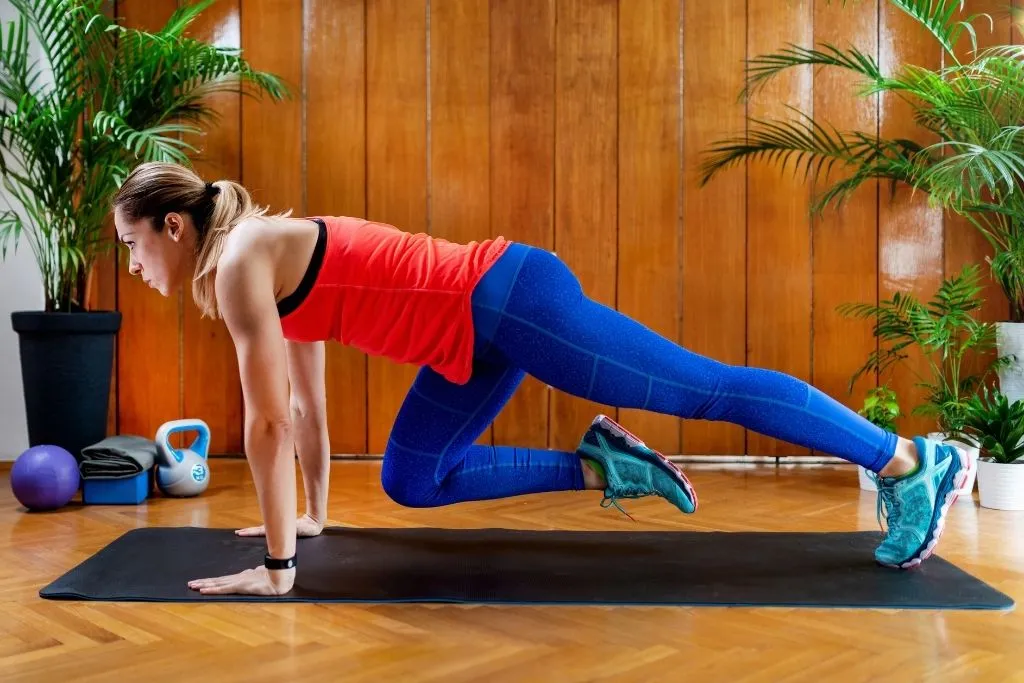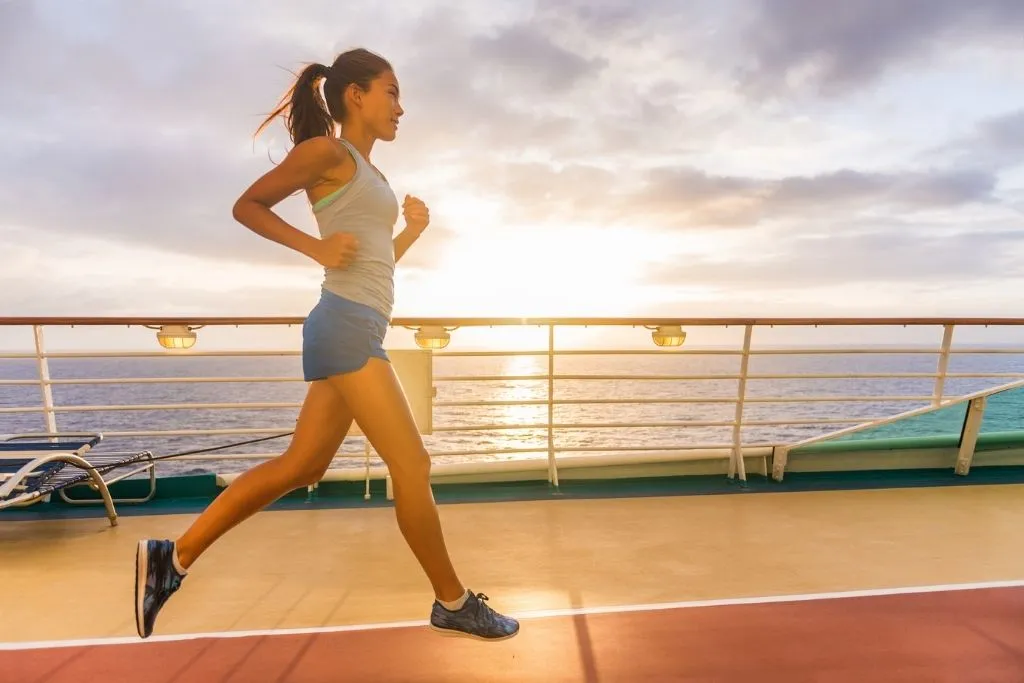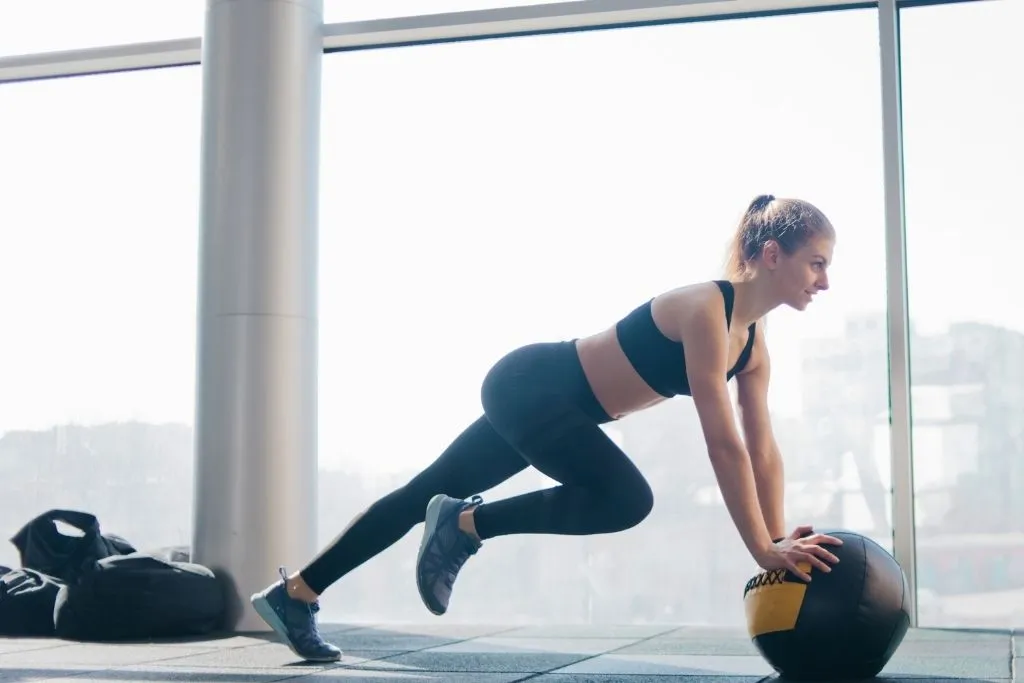Stretching, assouplissements, étirements…. Peu importe le nom que vous leur donnez, ils peuvent contribuer à la mobilité des articulations, la circulation et la posture, les étirements permettent avant tout d’améliorer votre souplesse. Au-delà de l’aspect esthétique et impressionnant de savoir faire le grand écart, être souple constitue un avantage dans bien des domaines se rapportant à votre état de forme générale. Ils peuvent également contribuer à prévenir les blessures et à accélérer la récupération après l’entraînement.
Il est donc important de s’étirer avant et après l’entraînement. Lorsque vous vous étirez, vous allongez vos muscles et vos tendons, ce qui les prépare à l’activité à venir. Vous réchauffez également vos muscles, ce qui les rend moins susceptibles de se claquer pendant l’exercice. Les étirements après l’exercice sont également importants, car ils aident votre corps à se refroidir et à récupérer de l’entraînement. Ils peuvent également contribuer à réduire les douleurs musculaires.
Quelle est l’importance des étirements avant et après l’entraînement ?
On ne saurait trop insister sur l’importance des étirements avant et après une séance d’entraînement. Les étirements avant l’entraînement préparent vos muscles et vos tendons pour l’activité à venir, tandis que les étirements après l’entraînement aident votre corps à se refroidir et à récupérer de l’entraînement. Ils peuvent également contribuer à réduire les douleurs musculaires. Les étirements devraient faire partie de la routine de remise en forme de chacun !
Les avantages des étirements
Les étirements sont une partie importante de toute routine d’exercice. Ils permettent d’échauffer le corps et de le préparer à l’activité à venir. Les étirements aident également à refroidir le corps après l’exercice et à prévenir les douleurs musculaires.
Il existe de nombreux types d’étirements, et chacun a ses propres avantages. L’étirement statique est un type d’étirement qui consiste à maintenir une position pendant un certain temps. Ce type d’étirement est bénéfique car il permet d’améliorer la souplesse. L’étirement dynamique est un type d’étirement qui implique de se déplacer dans une gamme de mouvements. Ce type d’étirement est bénéfique car il permet d’améliorer l’amplitude des mouvements et la coordination.
Comment s’étirer correctement ?
Il est important de toujours s’échauffer avant de s’étirer. Pour ce faire, vous pouvez pratiquer une activité aérobique légère, comme la marche ou le jogging, pendant 5 à 10 minutes. Une fois que vous vous êtes échauffé, vous pouvez commencer à étirer les muscles que vous allez utiliser pendant votre entraînement.
Pour vous étirer correctement, vous devez faire ce qui suit :
- Mettez-vous lentement en position d’étirement sans acoup
- Maintenez l’étirement pendant 30 secondes.
- Détendez-vous et revenez à la position de départ.
- Répétez 3 à 5 fois.
Étirez chaque muscle pendant environ 30 secondes et veillez à maintenir chaque étirement jusqu’à ce que vous ressentiez une légère gêne, mais pas de douleur. Cela vous aidera à réduire les douleurs musculaires et à améliorer votre souplesse.

Quand et à quelle fréquence s’étirer ?
Bien que les étirements soient couramment exécutés à la fin d’une séance de sport, ce n’est pas à ce moment-là qu’ils vous permettront de vous assouplir! De même, éviter également de faire une séance d’étirements avant votre entraînement sportif.
De façon plus générale, que vous soyez sportif ou non, il est recommandé de s’étirer lorsque vos muscles n’ont pas été longuement sollicités juste avant, peu importe le moment de la journée.
Pour que vous puissiez visiblement gagner en souplesse, il est évident qu’il faut être constant dans la pratique. Une séance de stretching par semaine de 60 minutes ou 2 séances de 30 à 45 minutes. Chaque position devra être maintenue un minimum de 30 secondes pour que l’assouplissement soit bénéfique pour le muscle et/ou l’articulation.
Attention ! Bien que le stretching soit une discipline douce, il est fortement conseillé d’être accompagné par un professionnel diplômé lors de vos séances. Si vos mouvements s’avèrent mal effectués, non seulement vous ne percevrez aucun effet mais vous risquez en plus de vous blesser.
Exemple de routine d’étirement pour les débutants

Avant de commencer tout type d’activité physique, il est important d’échauffer votre corps. Un bon programme d’étirement vous permettra d’échauffer votre corps et de le préparer à l’activité à venir. Cet exemple de programme d’étirement est conçu pour les débutants, mais peut être adapté à tous les niveaux de forme physique.
Les étirements doivent être effectués dans l’ordre indiqué, et chacun d’entre eux doit être maintenu pendant au moins 15 secondes. Si vous êtes novice en matière d’étirements, commencez par les deux premiers et passez progressivement aux autres.
- Étirement des ischio-jambiers : Asseyez-vous sur le sol, les deux jambes tendues devant vous. Tendez la main vers vos orteils et maintenez l’étirement pendant 15 secondes.
- Étirement des quadriceps : Debout, les pieds parallèles, étirez vos quadriceps (le muscle situé à l’avant de la cuisse) en ramenant l’un de vos pieds vers vos fesses. Actionnez vos hanches pour accentuer l’étirement. Maintenez cet étirement pendant 15 secondes.
- Étirement des muscles fléchisseurs de la hanche : Agenouillez-vous sur le sol, un genou plié et une jambe tendue derrière vous. Placez vos mains sur votre jambe tendue et penchez-vous vers l’avant en gardant le dos droit. Maintenez cet étirement pendant 15 secondes.
- Étirement des fessiers : Allongez-vous sur le dos et placez une cheville sur le genou opposé. Saisissez la cheville levée et tirez-la vers votre poitrine jusqu’à ce que vous sentiez un bon étirement des muscles fessiers. Maintenez cette position pendant 15 secondes.
- Étirement du mollet : Tenez-vous debout avec un pied placé devant l’autre, le talon levé de façon à ce que vous soyez sur la pointe des pieds. En gardant le dos droit, pliez la taille jusqu’à ce que vous sentiez un bon étirement des muscles du mollet. Maintenez cette position pendant 15 secondes.
- Étirement du haut du dos : Asseyez-vous bien droit, les pieds à plat sur le sol et la colonne vertébrale bien droite. Penchez-vous sur le côté et tendez le bras en travers de votre corps jusqu’à ce que vous sentiez un bon étirement des muscles du haut du dos. Maintenez cette position pendant 15 secondes, puis répétez l’opération de l’autre côté.
- Torsion vertébrale assise : Asseyez-vous sur le sol, les deux jambes tendues devant vous. Pliez un genou, en repliant le pied sous vous, et tournez la taille pour regarder par-dessus l’épaule. Gardez les deux épaules droites par rapport au sol. Maintenez cette position pendant 15 secondes et changez de côté.
Mais au fait, pourquoi faire des étirements ?
Les étirements pour rester libre de ses mouvements et maintenir son autonomie :
Lorsque nous pratiquons des exercices d’étirements, nos muscles et nos articulations s’assouplissent, se détendent. Comme toute pratique, plus nous nous exerçons plus nous gagnons en mobilité. C’est-à-dire que notre corps va progressivement s’adapter à faire des mouvements d’une plus grande amplitude et avec plus de facilité. La mobilité et la souplesse, associée à une activité physique, permettent de favoriser et transférer la force dans le corps.
Par exemple, une personne âgée faisant une chute sans gravité arrivera beaucoup plus facilement à se relever si elle est souple et mobile. De même, une personne lambda aura un meilleur maintien de sa posture corporelle, plus de facilité à effectuer sans douleurs des gestes du quotidien (lacer ses chaussures, faire le ménage, le jardinage etc) et moins de risque de blessures de types claquages, déchirures, tendinites, douleurs dorsales etc.
Plus nous sommes souples et mobiles plus nous sommes à l’aise dans notre corps et dans nos mouvements. Également, plus nos muscles et nos articulations sont mis en action et assouplis, plus nous serons protégé des éventuels blessures dues notamment à des faux mouvements, des mauvaises postures et la fragilisation corporelle de l’avancée en âge.

Les étirements pour améliorer ses capacités physiques et sportives :
Comme expliqué ci-dessus, les étirements favorisent la mobilité du corps et le rapport force/mouvements. Quand nous pratiquons une activité physique ou un sport, quel qu’il soit, le but premier est souvent de renforcer nos muscles, ce qui peut sur du long terme nous raidir dans nos mouvements. Le stretching est donc d’autant plus important car en assouplissant nos muscles et articulations nous favorisons l’amplitude de nos mouvements et diminuons les contraintes de l’entraînement. S’étirer peut également permettre d’améliorer notre vitesse d’exécution d’un mouvement et notre stabilité dans un exercice donné.
Le stretching est donc un allié important pour les sportifs ! Pour en être convaincu il suffit d’observer notamment la souplesse des judokas, l’habileté des gymnastes, la puissance et la coordination des haltérophiles.
L’étirements pour simplement se faire du bien :
Au-delà des avantages physiques que représentent les étirements, ils constituent également un moment de bien-être. Dans cette discipline, on ne recherche pas la douleur mais l’étirement.
Le corps et l’esprit peuvent relâcher les tensions, on prend le temps de se détendre, d’effectuer doucement et progressivement un mouvement.
En associant la respiration aux mouvements, on favorise aussi l’apaisement de l’esprit et la concentration. Les assouplissements permettent donc de se recentrer sur soi-même et de bien prendre conscience de son corps.
Les étirements avant et après l’entraînement constituent une partie importante de toute routine d’entraînement. Ils permettent de prévenir les blessures, d’augmenter la souplesse et de réduire les douleurs musculaires. Dans cet article, nous vous présentons les meilleurs étirements pour réchauffer et refroidir votre corps. Que vous soyez un débutant ou un athlète chevronné, assurez-vous d’ajouter ces étirements à votre routine quotidienne !
L'expert Fitness pour Oktofit :


